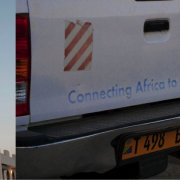Virtual Kenya: A Path to Improved Development Planning
Effective development and program management is crucial for sustained economic growth and positive social change to be achieved. But limited high quality spatial data and cutting edge mapping technology (coupled with widespread connectivity issues) impede proper planning in much of the developing world.
 Last week’s launch of Virtual Kenya, an online interactive web platform for charting human environmental health with related material for those with no access to the internet, offers a guide on how to improve this paucity of high quality and reliable spatial data. The innovation will enable Kenyans to use and interact with spatial data in their educational and professional pursuits, which will undoubtedly improve the relevance of their education and work for improved livelihoods, society and nation building.
Last week’s launch of Virtual Kenya, an online interactive web platform for charting human environmental health with related material for those with no access to the internet, offers a guide on how to improve this paucity of high quality and reliable spatial data. The innovation will enable Kenyans to use and interact with spatial data in their educational and professional pursuits, which will undoubtedly improve the relevance of their education and work for improved livelihoods, society and nation building.
The newly launched platform will provide online access to publicly available spatial data sets, as well as, interactive tools and learning resources to utilize the vast array of data. This unprecedented opportunity to download, publish, share and comment on a myriad of map-based products will promote data sharing and spatial analysis.
As I suggested earlier, this is a game-changer in the development space because it will enable sound decision-making and development planning in Kenya. This is possible because Virtual Kenya will be of use to a wide cross-section of people, including high school and university teachers and students, government planners, GIS professionals and local government officials.
This development shows that web-based spatial planning tools have the potential to structure and strengthen the development space. In discussing the strengths of Virtual Kenya with my colleagues, we pondered about the sustainability of this initiative because of the difficulty with gathering and sorting spatial data. But, Virtual Kenya is likely to outlive these concerns because of its democratic, community-based nature, and the range of organizations involved in this project: Wildlife Clubs of Kenya, International Livestock Research Institute, World Resources Institute, Upend (the Kenyan-based developer), and technical support from Danida and SIDA.
Upend, the technical lead on the collaborative Virtual Kenya project, provided the following list (and notes) of interactive tools that will be utilized:
- Virtual Kenya Tours using Google Earth with 2D and 3D maps, images, and graphs to explain data from the Atlas with voice overs in an interactive and entertaining format.
- Interactive Map Viewer that allows users to view, create, and download maps of Kenya
- Social networking community to share GIS and mapping experiences among Virtual Kenya users;
- Baseline data on Kenya’s environment and geography in multiple file formats that are freely available and comprehensive;
- Learning resources, including a teachers guide and student activity booklets, to help educators use maps and information from the Atlas in their classrooms even without access to the Internet or computers;
- Tutorials to help users take advantage of all that Virtual Kenya has to offer
This mix of tools shows that even those with limited/no with GIS technology will find Virtual Kenya user-friendly. The visual nature of the innovation will also limit the constraints posed by issues of illiteracy, functional and otherwise.
The Honorable Dr. Ottichilo, a Member of Parliament for the Emuhaya Constituency, shares his thoughts on Virtual Kenya and its potential for improved development planning. Dr. Ottichilo earned a PhD in natural resources planning, assessment and management.
For more details on Virtual Kenya, please go here





































